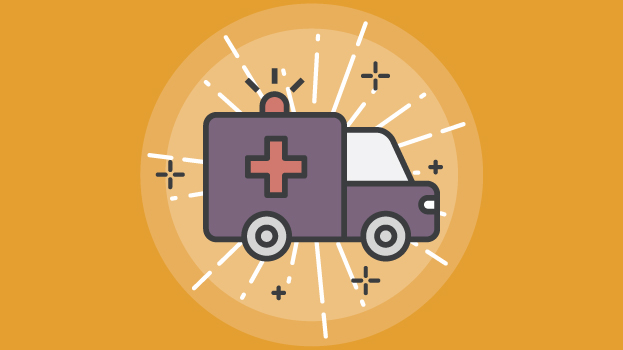In our last podcast on digital transformation in pharmaceuticals, we looked at how Pharma & Healthcare companies are slowly adopting and adapting to new technologies.
This time, we look at what that means for patients and practitioners. Will we all end up with a doctor at our fingertips?
To discuss, we sat down with Jörg Klumbis, co-founder and CFO at AIO Health Pro. With more than 20 years of experience in the pharmaceutical sector, in 2018 he devoted himself to a new project: AllInOne (AIO) Health Pro, founded with three other partners in 2016. The company offers commercial, marketing and training solutions to professionals in the Healthcare industry.
Please note, as the podcast is in Spanish, we’ve added a transcript below in English for convenience!
Where do you think digital evolution derives from in the pharma sector?
This topic has multiple aspects. In the Healthcare industry, the final client is the patient. Then there are the prescribers such as the doctors and the pharmacists. From my point of view, we will see change on two sides here.
First will be changing interactions with the client, i.e. the patient. We should see growing transparency for a number of reasons. For example, opinions and reviews on social networks, which emphasise the need to build a corporate brand for companies.
Easier access to online information also means more informed users. Information found online is not always correct, however, and may be biased. This may put a strain on doctors and pharmacists. As for products, I predict that the rankings of medications (efficacy, safety, side effects) will become ever more important for clients. Health professionals may be able to give their educated opinion about different products.
On the other side is the prescriber, i.e. doctor, pharmacist, etc. The digital world allows for more prescribers, or ‘influencers’ in the health space. This may improve contact (e.g. response rates) with clients and broaden their reach as well.
Prescribers will also benefit from a variety of channels and platforms of contact. Offline, of course, we have face-to-face interaction through medical-pharmacy visits, conferences, round tables, etc. Meanwhile, online or remotely, we now have virtual visits, chats, e-mail, video, social networks, and so on.
The challenge I see here is to integrate this information to have a unique profile/history that can be recorded and referenced consistently across these different channels.
What challenges do companies face when adapting to new technologies?
There are a number of factors at play here:
– Lack of senior management support – many times they do not see the changes as necessary, especially in an environment of wealth and a business model very based on the product
– Little justification of the investment, with an initially uncertain return or ‘too difficult to measure’, especially in multinationals
– Poor change management in the company
It’s important to note that the pharmaceutical industry is one of the most regulated sectors. This is both in the area of research and development, production, etc. It also applies to the content to be communicated, like restrictions when promoting your products.
Another risk to consider is being late. In the area of non-prescription products, for example, Amazon has entered with all its logistic and digital power, and companies must find answers quickly. In this case, associations like ANEFP (la Asociación para el Autocuidado de la Salud) must help.
Is there a place for startups in the pharmaceutical sector, which has traditionally been dominated by large corporations?
Yes, there are many examples that show this is possible. For example, the Spanish Association of Business Angels (2018), placed 29% of their investments in companies in the pharma or healthcare field, focusing on smaller laboratories.
These kinds of startups are the third-most attractive companies to invest in, only behind the software and online banking industries. Another way to find investment is through “Equity Crowdfunding”, like Capital Cell, who invest in healthcare technology companies, where one-third is focused on finding drugs or diagnostic technology.
Another 30% develops new systems, such as surgery robots. There are also interesting projects in the bio-informatic field.
There are also collaborations between big companies and startups through “Corporate Venturing”, where Big Pharma provides its services and investment to own the rights of the product or service.
But in general, it is certainly no walk in the park for smaller players. This is due to widespread risk aversion (and failure) in Europe. The US and UK have a different attitude.
How is AIO Health Pro playing a part in this digital transformation?
In July, we sent out our own survey to companies in the sector, and 86% of laboratories believe that they can increase their results with the use of omnichannel digital strategies.
At AIO Health Pro, we understand that the challenge is not only the digital revolution itself but to causing change in user habits. We want to be the partner helping them to incorporate this challenge in their day-to-day lives. Specifically, we have developed services and platforms as well as knowledge about the targets, using data and more.
We have a lot of knowledge about doctors and pharmacists thanks to our database, so we have created platforms which are a way to open new digital channels to communicate and interact with the healthcare professional.
We also have our AIO Doctors/AIO Pharma platform, where we offer daily industry news, online resources, direct communications from doctors to laboratories with active campaigns via chat, email and other platform elements.
Our integrated genius e-learning platform offers capsules and course material or studies of products and services. In addition, we have training in topics that help the doctor or pharmacist in their role as entrepreneur or manager.
The remote visit has the advantage of being much cheaper by impact and allows for more than twice the daily impact than face-to-face visits.
What is the future of the ‘doctor’s visit’?
I can only give my opinion because there is no definitive answer for this… The medical visit will include more opportunities for contact both online and offline. Offline interactions may remain the same, but online channels will allow much more freedom – call, video, chat, e-mail, social networks, e-learning platforms, etc.
What do you consider to be the most sought-after talent profiles in the sector?
First and foremost, digital profiles with IT + other qualifications are crucial, for example, digital marketing, digital finance, etc.
Everyone will need to act as a “super user” and be comfortable with technologies to be able to collaborate in decentralised work teams (home office, virtual project teams).
Other desired skills are being multilingual/international, and most of all, a specialist but also with holistic knowledge and approach.
And there is always the need for a “translator” between media and projects; someone who can work seamlessly between IT and company processes. This also applies between specialist digital tools and the main strategic lines of the company. Of course, some profiles are operational, whilst others are more strategic.
And, finally, the world will need people who accept that the “only constant in life is change”!













 October 9, 2019
October 9, 2019 




